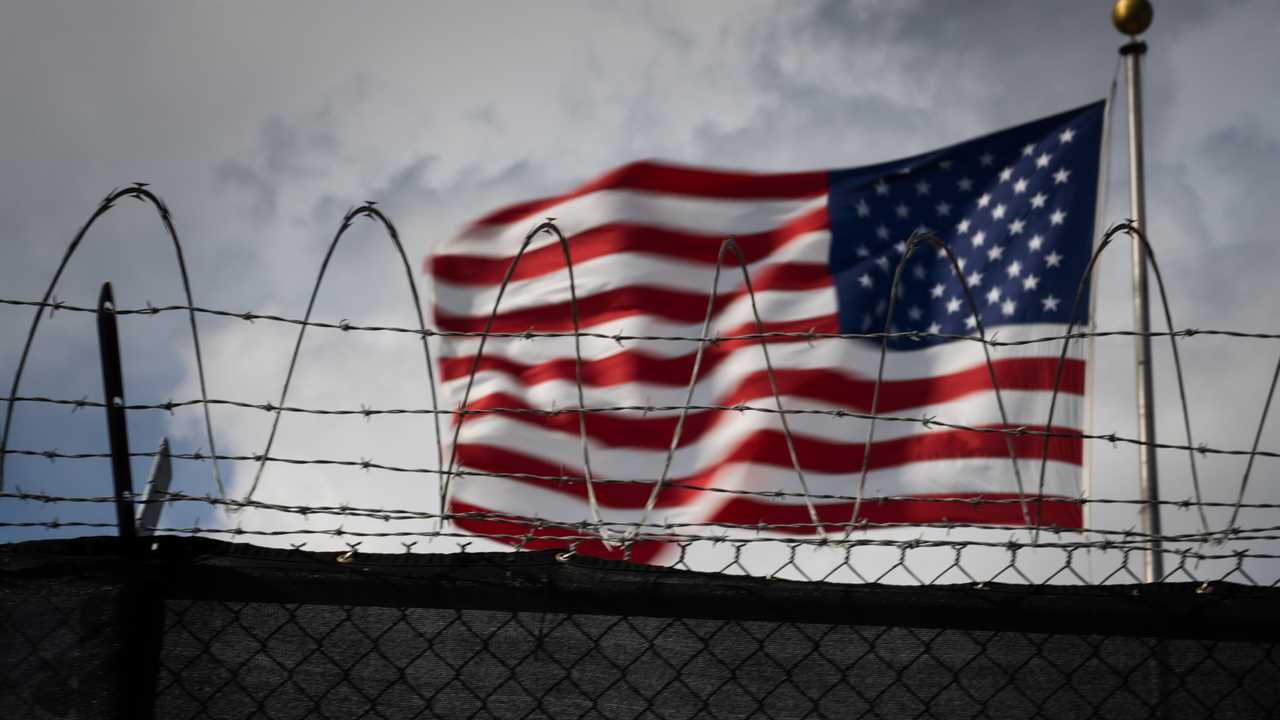
Two men who have been held for years without charges at Guantánamo Bay — a Yemeni and an Afghan whose repatriation would most likely require reaching an agreement with the Taliban — have been approved for transfer, according to documents released on Wednesday.
The interagency Periodic Review Board endorsed the transfers of Sanad Yislam al-Kazimi and Assadullah Haroon Gul with security arrangements, but did not suggest where Mr. Gul, an Afghan citizen who has been held by the U.S. military since 2007, might be sent.
The board said that Mr. al-Kazimi should be resettled in Oman, a Persian Gulf country abutting his native Yemen whose rehabilitation program received 30 detainees during the Obama administration. Yemen is considered too unstable to monitor and help rehabilitate returnees.
The board approved Mr. al-Kazimi’s transfer on Oct. 7, less than two weeks after the State Department official responsible for overseeing detainee transfer arrangements, John T. Godfrey, visited Oman, the United Arab Emirates and London in his capacity as acting coordinator for counterterrorism.
Biden administration officials would not comment on efforts to repatriate or resettle the cleared detainees.
Mr. al-Kazimi, 41, was captured in Dubai in January 2003. U.S. military intelligence considered him to be a bodyguard to Osama bin Laden in Afghanistan. Mr. al-Kazimi’s lawyer, Martha Rayner, a professor at Fordham Law School, said he was in “pretty good” health and “looks forward to being transferred as quickly as possible.”
Defense Secretary Lloyd J. Austin III and other officials have said the president’s goal is to empty the detention center at Guantánamo Bay, reviving a promise made by President Barack Obama when Mr. Biden was the vice president.
Congress thwarted that effort by forbidding the transfer of any detainee from Guantánamo to the United States for any reason. The Biden administration has made no progress on lifting the restriction, which would be a key step toward closing the prison. Only one detainee, Abdul Latif Nasser of Morocco, has been released since Mr. Biden took office, and that was under an agreement reached during the Obama administration.
The disclosures on Wednesday raised to 12 the number of men among the 39 wartime detainees at Guantánamo who can be released if the United States can reach an agreement with a receiving nation to impose security restrictions, which would include measures such as restricting their ability to travel abroad.
Another 12 are in military commission proceedings, six of whom are charged in capital cases. The other 15 detainees are held as “law of war” prisoners, essentially forever captives of the conflict that began after the attacks of Sept. 11, 2001.
Ms. Rayner said Mr. al-Kazimi sought to be transferred to an Arabic-speaking country where he could be reunited with his wife and would be able to “someday see his four children and his grandchildren.”
“What he wants is to live in a stable country in peace,” she said. But she added that Mr. al-Kazimi is “concerned about the unknowns ahead of him — and knows that many men have been cleared and yet languished for years.”
Mr. Gul’s transfer presents more difficulties. His lawyers have been pursuing his release through an unlawful detention petition in federal court, and last year obtained support for his repatriation from the government of Afghanistan, before it fell to the Taliban.
Understand the Taliban Takeover in Afghanistan
Who are the Taliban? The Taliban arose in 1994 amid the turmoil that came after the withdrawal of Soviet forces from Afghanistan in 1989. They used brutal public punishments, including floggings, amputations and mass executions, to enforce their rules. Here’s more on their origin story and their record as rulers.
He was captured by Afghan forces while serving as a commander of the Hezb-i-Islami militia, which fought the American and allied invasion of Afghanistan along with the Taliban and Al Qaeda. The board said in its decision, also dated Oct. 7, that it had concluded he could be safely transferred, with security arrangements, in light of his “lack of a leadership role in extremist organizations and his lack of a clear ideological basis for his prior conduct.” It did not make a recommendation on where he should go.
The United States has repatriated more than 200 Afghan detainees during the nearly 20 years it has held prisoners at Guantánamo, all of them while Afghanistan was led by a government allied with and supported by the United States.
Oman has been considered an ideal, culturally compatible nation to receive Yemeni detainees. The country’s program has generated no known controversy and has helped Yemeni detainees find homes and jobs and, in some instances, allowed family members in Yemen to send women for them to marry.
In contrast, human rights groups and lawyers for some former detainees have criticized the program in the United Arab Emirates for continuing to imprison detainees sent there for rehabilitation and resettlement and then suddenly repatriating some of them to Afghanistan and Yemen.
Did you miss our previous article...
https://trendinginthenews.com/usa-politics/jan-6-panel-subpoenas-jeffrey-clark-former-justice-dept-official






